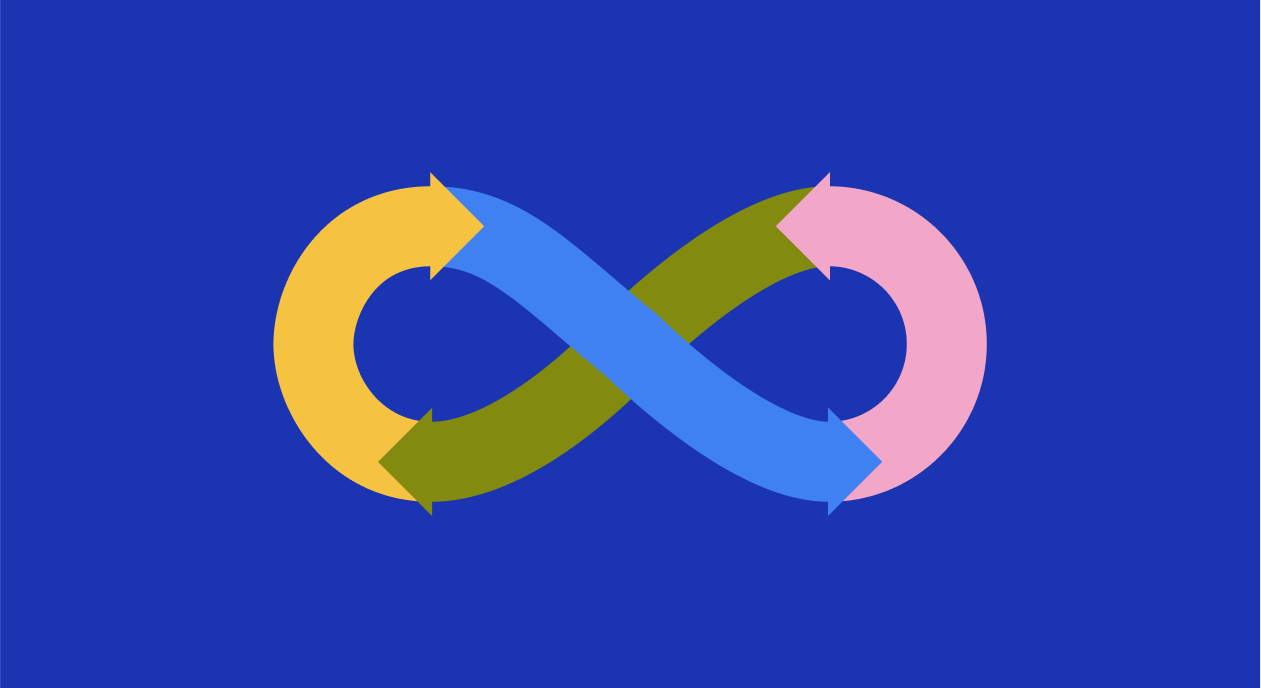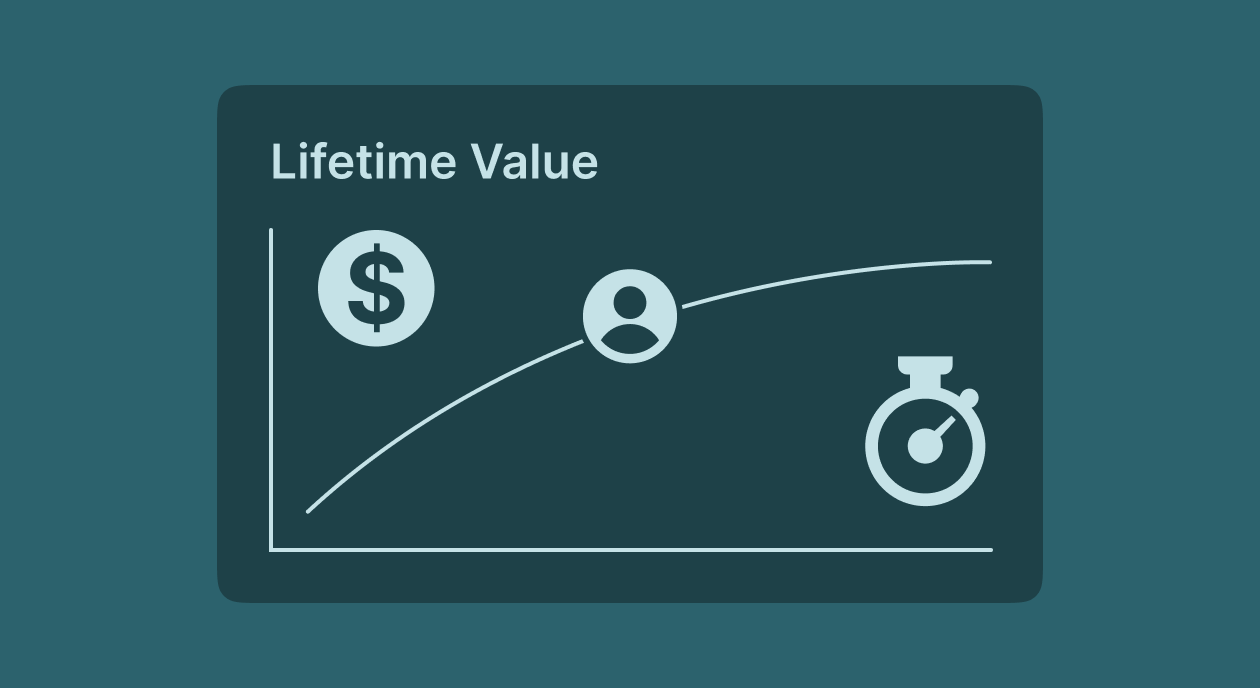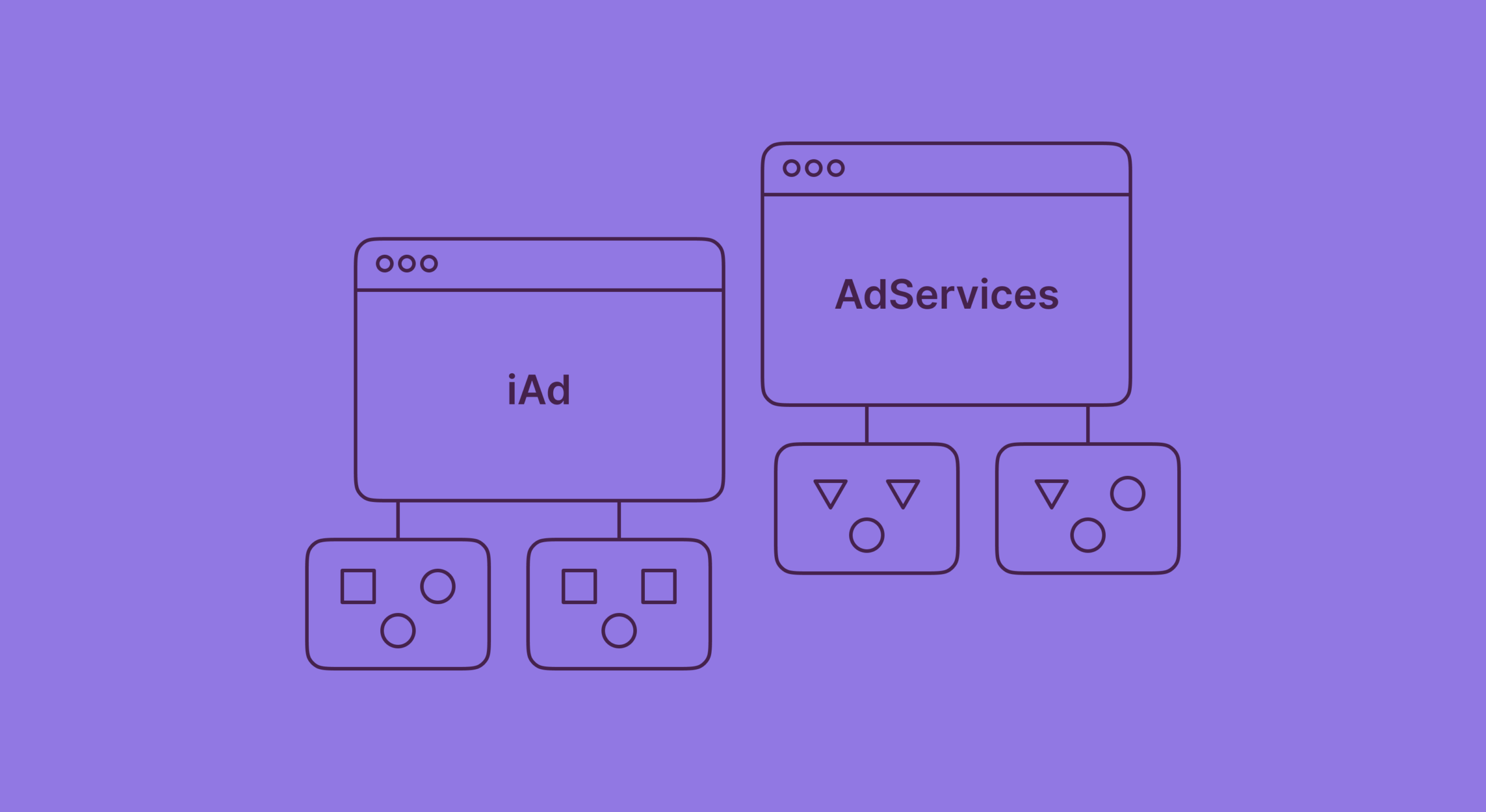What if your product was designed to promote itself? No extra nudges, whatsoever.
Marketing 101 has taught us the tried-and-tested recipe for a successful app. Build an excellent product, market it via different channels, and optimize them according to the results. But what happens when you’ve done all the optimization you could? How do you keep your growth… growing?
That’s where the secret sauce comes in. If you’ve ever bought something because your friend recommended it, you’re already familiar with what growth loops are— the smart marketer’s tool to success. But not everyone knows about it!
In this blog, discover how to use cohort analysis to drive your growth loop to success. If you’re looking for retained, engaged, and money-making users for your app, this read is for you. Let’s start with the fundamentals:
What are growth loops?
Growth loops are a strategic marketing framework designed to become a self-sustaining engine of growth. They operate on the principle of self-perpetuating cycles, where the output from one cycle becomes the input for the next, resulting in compounding growth over time.
There are three main types of growth loops in 2024, such as:
- Virality loops: Making your app go viral amongst a targeted audience.
- Content loops: Sharing user-generated content to attract similar new users.
- Engagement loops: Constantly providing value to keep the engagement rates high.
So how does it work?
Each loop begins with an initial input, which could be new user acquisition, content creation, or any other action that drives value. This input leads to specific actions taken by users, such as engaging with the product, generating more content, or inviting friends.
These actions produce outputs that not only deliver immediate value but also create new inputs that feed back into the system, thus perpetuating the cycle. Here is what the cycle looks like:
Growth loops versus traditional growth strategies
Many marketers will often underestimate the true power of growth loops, especially when compared to a traditional growth strategy. While the latter relies on linear, one-time efforts through advertising or marketing campaigns, growth loops are designed to become inherently self-sustaining.
Their effect on your app’s success and engagement keeps compounding without constant external investment, which a traditional strategy can not offer. Instead, you’ll have to invest in it repeatedly to maintain the growth.
Furthermore, growth loops exploit user activities to create an organic growth mechanism that doesn’t cost more money and also has the capacity for exponential growth. And that’s why I call growth loops a smart marketer’s tool!
Why are funnels not enough for product growth?
If you want product growth like no other, you can’t rely on marketing funnels anymore. In 2024, app growth comes from different types of growth loops, and we’ll tell you why marketing funnels are no longer the “it girls” of the marketing dynamic.
1. Linear and finite in nature
Funnels are inherently linear and finite. They represent a one-way journey from awareness to conversion, often neglecting what happens after a customer makes a purchase or completes a desired action.
Once users reach the bottom of the funnel, they are no longer part of the active growth mechanism. And that brings us to stagnation. For instance, a subscription service can see a spike in sign-ups after a marketing campaign. However, if the funnel doesn’t have a mechanism to keep the subscribers engaged, the initial growth will give birth to high churn rates and poor engagement.
2. Limited feedback and adaptability
Funnels often lack mechanisms for ongoing feedback and adaptation. They are designed to optimize the conversion process but do not inherently facilitate learning from user behavior after the initial conversion. This limits the ability to make data-driven improvements and adapt to changing user needs or market conditions.
If we compare this to growth loops, the latter integrates continuous feedback mechanisms, allowing businesses to iteratively improve their products based on real user data!
For example, a SaaS company could implement growth loops where user behavior and feedback during the trial period inform product improvements, which in turn make the product more appealing, reducing churn and driving more referrals.
3. Lower ROI
Traditional funnels have reportedly returned lower ROIs than growth loops. As you keep investing more and more money into marketing campaigns and funnel optimizations, your return is not as grand as it should be.
On the other hand, growth loops tend to require minimal investments and yield higher returns since they’re focused on word-of-mouth techniques (as well as a few other tricks) from existing users. That in turn, results in a higher ROI, compared to traditional funnels!
The benefits of using growth loops
Growth loops can yield a lot of unique benefits if done correctly. While you can’t enjoy a successful growth loop for a less-than-mediocre product, there are a few benefits of growth loops you can get if you have a potential product:
Continuous growth
Growth loops foster a self-perpetuating system where each completed loop feeds into the next, enabling continuous growth. Unlike traditional linear growth strategies— where progress may stagnate after initial gains— growth loops ensure that every new customer or piece of content contributes to further expansion. This creates a compounding effect, where growth accelerates over time as more cycles are completed.
Improved retention
By design, growth loops often incorporate elements that enhance user engagement and retention. For instance, user-generated content or network effects can create value that keeps users returning to the product.
When users see increasing value as more people join and contribute, they are more likely to stay engaged. Improved retention rates lead to a larger, more active user base, which in turn fuels further growth.
Scalability
Growth loops are inherently scalable. As the system grows, the inputs and outputs increase proportionally, enabling the business to handle higher volumes without significant incremental costs.
This scalability is particularly advantageous for digital products and platforms, where the cost of serving additional users is relatively low compared to the potential revenue generated. Scalability ensures that the growth loop can continue to operate efficiently even as the user base expands significantly.
Cost-effectiveness
Once established, growth loops can reduce the need for expensive marketing campaigns and customer acquisition strategies. Since the loops drive organic growth, the cost per acquisition can decrease over time. This makes growth loops a cost-effective way for sustainable growth, freeing up resources for other strategic investments.
Enhanced product-market fit
Growth loops often involve active user feedback and engagement, providing continuous insights into user preferences and behaviors. This real-time feedback helps in refining the product and improving its fit with the market. As the product evolves based on user input, it becomes more appealing, attracting even more users and creating a virtuous cycle of improvement and growth.
Increased competitive advantage
Implementing effective growth loops can create a significant competitive advantage. As growth loops drive continuous and scalable growth, businesses can outpace competitors who rely on more traditional, linear growth strategies. The ability to grow faster and more efficiently can (and will) lead to market leadership and greater market share.
Types of growth loops based on their goals
To preface, there are a few different types of growth loops, depending on either their goals or their design. In this part, let’s talk about the 3 different types of growth loops based on their goals.
Acquisition loops
Acquisition loops are designed to attract new users to a product or service. These loops create a self-reinforcing cycle where the actions of current users lead to the acquisition of new users. The primary goal of acquisition loops is to expand the user base, leveraging mechanisms that drive user referrals, word-of-mouth, and organic growth.
So what strategies do they use?
- Referral programs: Encourage existing users to invite friends by offering incentives like discounts, free services, or rewards for successful referrals.
- Virality features: Integrate features that naturally promote sharing, such as social media integrations, sharing buttons, or collaborative tools.
- Content marketing: Produce valuable content that attracts new users through search engines and social media to increase organic traffic.
Monetization loops
Monetization loops focus on generating revenue from existing users. These loops aim to maximize the financial returns from each user by encouraging repeat purchases, upselling, and cross-selling. The goal is to create a cycle where users continuously spend money on the product, driving steady and increasing revenue.
For a successful monetization growth loop, you need a deadly combination of the following:
- Freemium models: Offer a basic version of the product for free while providing premium features at a cost, enticing users to upgrade based on their needs and usage.
- In-app purchases and upgrades: Provide additional features, services, or content for purchase within the product, encouraging ongoing spending.
- Subscription services: Implement subscription models where users pay regularly for continued access to the product or service.
Retention loops
If your app is facing a high churn rate and you’ve scratched your head, wondering what to do, maybe a retention loop can be your savior. These loops are designed to keep users engaged and reduce churn by ensuring they find value in the product over time, fostering loyalty and long-term usage.
The primary goal of retention loops is to maintain a stable user base and maximize customer lifetime value. You can achieve that successfully by implementing the following strategies:
- Personalization: Tailor the user experience based on individual preferences and behavior, making the product more relevant and engaging.
- Continuous engagement: Regularly update the product with new features, content, or improvements to keep users interested and engaged.
- Loyalty programs: Reward long-term users with exclusive benefits, discounts, or recognition, encouraging continued use and loyalty.
Types of growth loops based on their design
Growth loops can also be categorized by their design and implementation, each with unique features and mechanisms tailored to specific growth strategies. Understanding these types can help you recognize which one suits your app the best!
Here are the 3 types of growth loops based on their goal:
Viral growth loops
Viral growth loops leverage the power of word-of-mouth and social sharing to achieve rapid user acquisition. The core mechanism involves existing users inviting new users, creating a self-sustaining cycle of growth. Here is how the cycle runs itself:
- Existing users share the product with friends or contacts for exclusive content, discounts, and features.
- Users promote the product by sharing their experiences on social media platforms, which increases brand awareness and visibility.
- The value of the product increases as more people use it, encouraging further sharing and adoption.
Product-led growth loops
Product-led growth loops focus on the product itself as the primary driver of user acquisition and growth. These loops rely on the inherent value and features of the product to attract and retain users.
For product-led growth loops, you have 3 key elements that run the mechanism smoothly, including:
- Free trials and freemium models,
- In-product virality options,
- Constant user feedback and product improvement.
A prime example of product-led growth loops can be seen in Slack, which uses a freemium model that small teams can use for free but larger teams have to pay for in order to get additional features, necessary for smoother operations.
Content-led growth loops
Last but not least, we have the content-led growth troops. Unlike the former two mentioned in this blog, this growth loop revolves around creating and distributing valuable content to engage users and drive growth. These loops capitalize on the ongoing production and sharing of content to attract and retain users.
YouTube is a prime example that uses content-led growth loops as it thrives on user-generated content to attract viewers— or should I say, users? This is why the company is now earning a net revenue of $31.5 billion per year!
In order to successfully execute a content-led growth loop, you’ll need 3 things in place:
- User-generated content: Encouraging users to create and share content generates a continuous stream of new material that attracts new users and keeps existing users engaged.
- Content marketing: Producing high-quality, informative content that addresses user needs and interests draws in organic traffic through search engines and social media.
- Community engagement: Building a community around the content, where users interact, share, and discuss, fosters deeper engagement and loyalty.
Examples of growth loops in well-known products
Now let’s step outside the theory box for a bit. I’m sure you’d like to take a break from the amount of information presented to you earlier. And so, we’re going to take a look into 3 well-known products that are actively benefitting from growth loops of one kind or the other.
1. Dropbox
Dropbox is a well-known product that successfully utilized a growth loop centered around its referral program. The referral loop was simple yet highly effective: existing users were incentivized to invite friends to join Dropbox by offering additional storage space to both the referrer and the new user. This dual-sided incentive provided a strong motivation for users to spread the word about Dropbox.
The design of Dropbox’s growth loop created a viral effect. As users found value in the additional storage, they were eager to invite more friends, who in turn had the same incentive to invite their own contacts. This self-perpetuating cycle led to rapid user acquisition. In the first 15 months, Dropbox’s user base grew from 100,000 to 4 million, and by 2017, the number had gone up to over 500 million users!
This growth loop not only accelerated user acquisition but also reduced marketing costs. Instead of relying heavily on traditional advertising, Dropbox leveraged its existing users to drive growth. This approach created a compounding effect, where the continuous influx of new users perpetuated the growth cycle, ultimately leading to Dropbox’s widespread adoption and market success.
2. Slack
Slack is another exemplary product that leveraged a growth loop to achieve substantial growth. Slack’s growth loop was primarily product-led, focusing on the inherent value and utility of the product to drive user acquisition and engagement.
The core of Slack’s growth strategy was its freemium model, which allowed small teams to use the product for free while offering paid plans with additional features for larger teams.
The design of Slack’s growth loop was rooted in its collaboration features. As teams began using Slack, they invited their colleagues to join the platform to facilitate better communication and collaboration. This natural virality was bolstered by Slack’s seamless user experience and continuous product improvements based on user feedback.
The impact of Slack’s growth loop was significant. Within its first year, Slack had over 500,000 daily active users. By 2017, it had grown to 6 million daily active users and 9 million weekly active users, with over 50,000 paid teams.
The product’s utility and ease of use led to high engagement rates, with users spending more time on the platform and inviting more team members. This organic growth was complemented by the transition from free to paid plans, which allowed Slack to scale its revenue effectively.
3. Instagram
Who doesn’t have Instagram on their phones? Well, this fun app is an excellent example of how you can use a content-led growth loop to your benefit. Instagram’s growth loop revolved around user-generated content and social sharing. The platform made it easy for users to take, edit, and share photos not only within Instagram but also across other social media platforms like Facebook and Twitter.
Whether it’s stories, quirky reels, or posts, the options here are quite diverse! And that’s because Instagram’s design was centered around the creation and distribution of visually appealing content. As users shared their photos and videos, their friends and followers were exposed to Instagram, creating a natural curiosity and desire to join the platform.
This user-generated content acted as a continuous advertisement for Instagram, drawing more users into the loop. Much like a tornado!
In just two months after its launch in October 2010, Instagram had 1 million registered users. By April 2012, the number of users had skyrocketed to 30 million. In June 2018, Instagram reached 1 billion monthly active users, demonstrating the exponential growth facilitated by its content-led growth loop.
Instagram’s focus on high-quality visual content and community engagement kept users actively creating and sharing, leading to high levels of user engagement and retention. That’s how this is one of the biggest social media apps in the world right now!
How to integrate tiered pricing strategy in growth loops
Growth loops and pricing strategies go hand in hand. One of the most effective ways to monetize your growth loops is by incorporating tiered pricing models. These pricing strategies offer multiple pricing tiers that cater to different user segments, maximizing revenue potential.
Tiered pricing examples can be seen in many SaaS companies. For instance, a basic tier might be free with limited features, while higher tiers offer more advanced functionalities at a cost. This tiered pricing model attracts a wide range of users but also encourages upgrades as users find more value in the product.
When considering a tiered pricing strategy, it’s important to align it with your growth loop. For example, your freemium tier can act as an acquisition loop, drawing in new users. As these users engage with your product, you can leverage monetization loops to upsell higher pricing tiers.
This integration of pricing tiers within your growth loop ensures that every stage of user interaction is optimized for revenue generation.
Moreover, the tiered pricing model offers flexibility. You can experiment with different tiers using Adapty to see which ones drive the most engagement and conversions. This iterative approach allows you to refine your pricing strategy based on real user data, enhancing both retention and revenue.
Key takeaways
Growth loops are cyclical processes where each action taken by users feeds into the next, creating a self-reinforcing cycle. Unlike traditional linear funnels, growth loops are designed to be perpetual and scalable which is why they are now the new way product marketing works!




